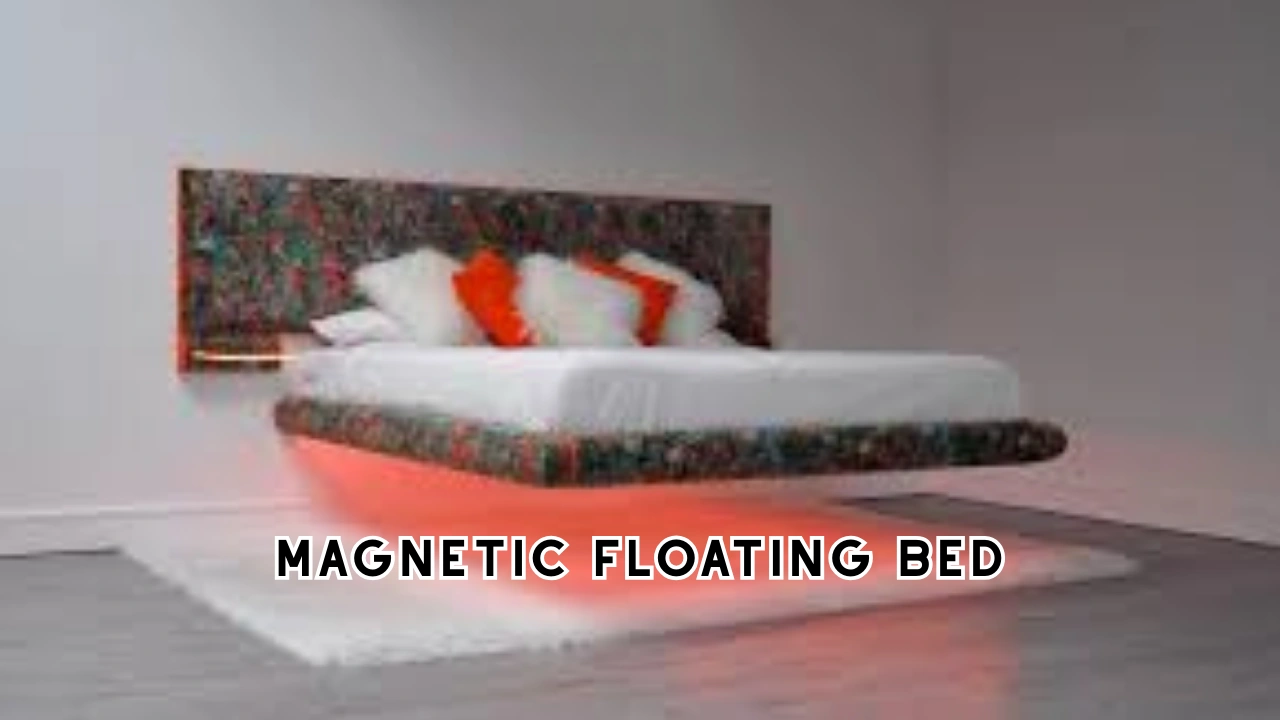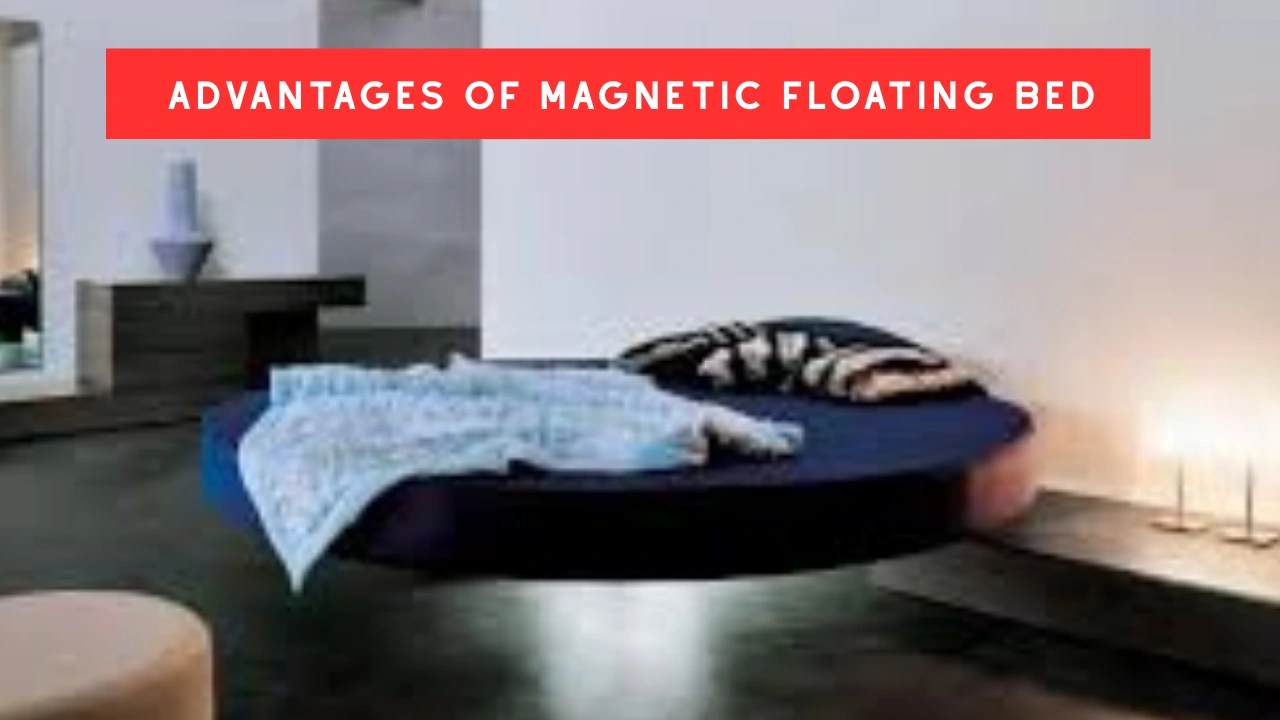Magnetic Floating Bed Innovations Transforming Interiors

The Magnetic Floating Bed is a furniture design that blends science, art, and imagination. It is not just a place to sleep but a statement of how technology can transform even the simplest parts of our homes. Picture lying in a bed that hovers above the floor, held in place not by legs but by the invisible force of magnets. That is the beauty of this invention.
In many ways, the idea feels like it belongs in a science-fiction film, much like a Captains Bed in a futuristic ship’s cabin. Yet, it is real and has been shown in full-scale models. The sense of weightlessness it creates can make sleep feel calm, while its design sparks wonder in anyone who sees it.
What is Magnetic Floating Bed?
A Magnetic Floating Bed is a modern bed design that hovers above the ground using powerful magnetic forces. It works by placing strong magnets in both the base and the bed frame, with like poles facing each other to create repulsion. This force lifts the bed off the floor, giving it a futuristic and weightless appearance.
The concept blends science, technology, and style to create a unique sleeping experience. Stability is maintained through cables or guiding systems to prevent sideways movement. The result is a bed that is both functional and visually stunning, making it a centerpiece in any modern bedroom.
How the Magnetic Floating Bed Works?
The Magnetic Floating Bed uses magnetic levitation, or maglev, technology. It relies on powerful magnets arranged in a way that their like poles face each other. Since like poles repel, the force pushes the bed upward, letting it float above the ground.
In some designs, cables or support frames prevent the bed from drifting sideways. This makes it safe and stable even if someone moves in their sleep. Designers take great care to balance the magnetic force so the bed feels natural to lie on.
How Much Power EMS Systems Actually Use
Electromagnetic suspension (EMS) systems in a Magnetic Floating Bed use electricity to keep the bed balanced and stable. The power is needed to control the magnets and adjust their strength in real time as weight shifts. In most designs, the energy use is surprisingly low compared to other household appliances.
A typical EMS setup for a full-size bed may consume between 150 to 300 watts during operation. This is similar to running a bright light or small fan continuously. With energy-efficient designs, the cost of running an EMS system daily can remain affordable for most users.
Types of Magnetic Floating Beds
| Type of Bed | How It Works | Main Benefit |
|---|---|---|
| Permanent-magnet levitation | Uses strong magnets to repel without electricity | Energy-free operation |
| Electromagnetic suspension (EMS) | Uses magnets and sensors to adjust lift and balance | Greater stability and control |
| Hybrid magnetic system | Combines permanent magnets with controlled electromagnets | Efficient and steady performance |
Permanent-magnet systems are the simplest because they do not need power to work. Electromagnetic designs add precision, adjusting magnet strength in real time to handle movement or weight changes. Hybrid systems blend both approaches for the best results.
Innovative Design of the Magnetic Floating Bed
Dutch architect Janjaap Ruijssenaars is known for creating one of the most famous versions of the Magnetic Floating Bed. His full-size model floats about 16 inches off the floor and can support over 1,000 kilograms. Steel cables connect it to the walls to keep it in place.
This bed is not cheap — the large model costs more than a million dollars, and even a smaller one can be over a hundred thousand. Yet, its purpose goes beyond being a product. It is a work of art that asks how far we can take everyday objects when we combine design and engineering.
Fashionisk .com: Sustainable Fashion Meets Affordability
Just as the Magnetic Floating Bed changes the way we think about furniture, Fashionisk .com Sustainable Fashion Meets Affordability changes how we see clothing. Both aim to combine style and innovation while making a lasting impact. It is inspiring to see such creativity in very different industries.
Advantages of a Magnetic Floating Bed
TA Magnetic Floating Bed creates an instant sense of luxury and uniqueness in any room. Its floating design makes the space feel more open and modern, giving it a futuristic appeal. The smooth suspension also reduces noise, making sleep more peaceful.

With no legs touching the ground, the bed frame experiences less wear over time, which may extend its lifespan. Cleaning underneath becomes easy since there are no supports blocking the floor. This combination of style, comfort, and practicality makes it a standout choice for design lovers.
Challenges and Limitations
For all its beauty, the Magnetic Floating Bed is not without challenges. The cost is high because of the powerful magnets and precision engineering needed. Strong magnetic fields can also interfere with electronics, and people with medical implants like pacemakers may need to avoid close contact.
Stability is another factor. Even small shifts in magnet alignment can cause imbalance. That is why most designs use guiding cables or rails for safety. Without these, the bed could drift or tilt unexpectedly.
How Designers Protect Users from Direct Magnetic Exposure?
Designers of a Magnetic Floating Bed carefully manage magnetic fields to ensure user safety. They often place shielding materials like mu-metal or special alloys around the magnets to block excess radiation. This keeps the magnetic influence within safe limits while maintaining levitation strength.
The bed’s frame and base are also engineered to guide magnetic fields downward and away from the sleeping area. In some models, the magnets are encased in layers that absorb or redirect stray fields. These measures help ensure comfort and peace of mind for anyone using the bed.
DIY and Experimental Versions
Some hobbyists have tried making smaller levitating platforms at home. By using large neodymium magnets and careful design, they can float lightweight frames. While these DIY versions are nowhere near as large or stable as a professional Magnetic Floating Bed, they show the potential for more affordable designs in the future.
However, safety remains a concern. Strong magnets can snap together with dangerous force, and without proper guidance, the floating platform can be unstable.
Developments in Magnetic Furniture Technology
The Magnetic Floating Bed is part of a bigger trend toward innovative, space-saving, and visually stunning furniture. As manufacturing costs for high-strength magnets go down, more designers may experiment with similar concepts. We might one day see floating chairs, tables, or even entire seating areas in public spaces.
The idea is not just about looks. Magnetic suspension could reduce vibration, improve durability, and even make cleaning easier since furniture would no longer touch the ground. In the long term, it could reshape how we think about interior design.
Experience and Lifestyle
Owning a Magnetic Floating Bed is as much about lifestyle as it is about comfort. It represents a willingness to embrace futuristic ideas and live in a space that feels unique. Guests will always notice it, and it becomes a conversation starter.
At the same time, it delivers a gentle, quiet sleeping experience. Without the hard contact points of legs on the floor, there is less transfer of noise and movement, which can make for a more restful night.
Conclusion
The Magnetic Floating Bed is more than a place to sleep — it is a statement piece that blends engineering, design, and imagination. While it is still rare and expensive, its existence proves that the boundary between art and everyday life can be blurred. As technology becomes more affordable, it may one day become a common sight in modern homes.
For now, it remains a dream object — floating quietly in the air, inviting you to rest as if you were lying on a cloud held up by invisible hands.






